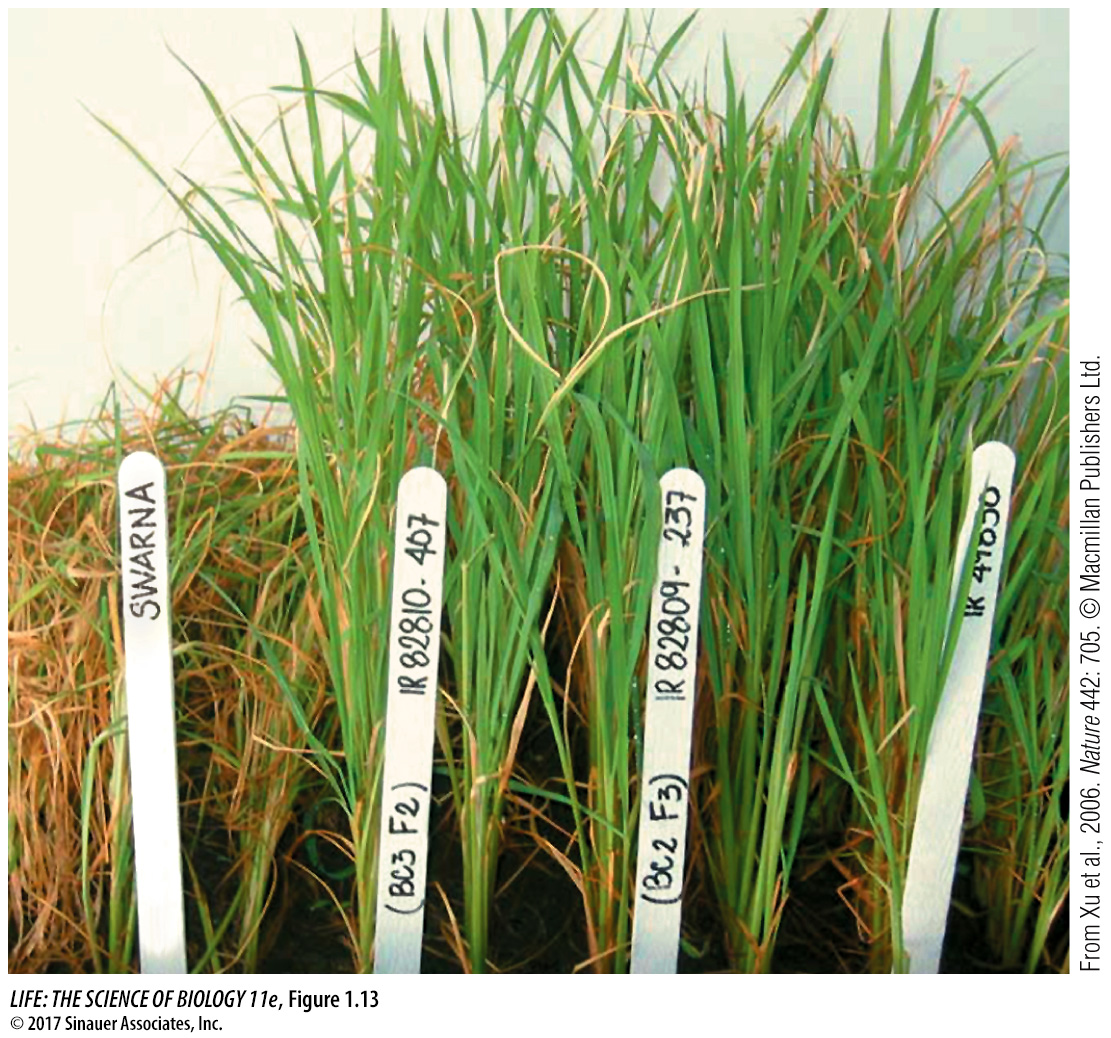Modern agriculture depends on biology
Agriculture represents some of the earliest human applications of biological principles. Beginning about 10,000 years ago, humans began to cultivate and harvest grains. It is probable that even in those early times farmers selected the most productive or otherwise favorable plants and animals to use as seed stock for propagation, and over generations farmers continued and refined these practices. By 1960, the worldwide yield of food grains reached a billion tons, but human population growth outpaced agricultural productivity and starvation was common in developing countries. Catastrophic famine was predicted for the 1970s. In response to those predictions, developed countries initiated huge efforts to produce genetically improved, higher-
A new threat to agriculture and the world food supply is global climate change. Some regions are becoming wetter and others drier, and those changes affect traditional agricultures. An example is rice, which normally grows in shallow water in rice paddies (Figure 1.13). But, common rice varieties cannot survive complete submergence for more than a few days, and are therefore killed by flooding caused by too much rain. In India and Bangladesh alone, annual flooding can destroy about 4 million tons of rice, enough to feed 30 million people. In recent years plant geneticists Pam Ronald, David Mackill, and their colleagues at the University of California at Davis have discovered a single gene from an ancient variety of rice that when genetically engineered into the current rice varieties makes them capable of surviving total submergence for many days. Advances such as this may help save the benefits of the Green Revolution from the new problems generated by global climate change.

Over the past few decades, detailed knowledge of the genomes of many domestic species and the development of technology for directly recombining genes have allowed biologists to develop new breeds and strains of animals, plants, and fungi of agricultural interest. New strains of crop plants are being developed that are resistant to pests or tolerant of drought or, in the case of rice, flooding. Moreover, understanding evolutionary theory allows biologists to devise strategies for the application of pesticides that minimize the evolution of pest resistance. And better understanding of plant–